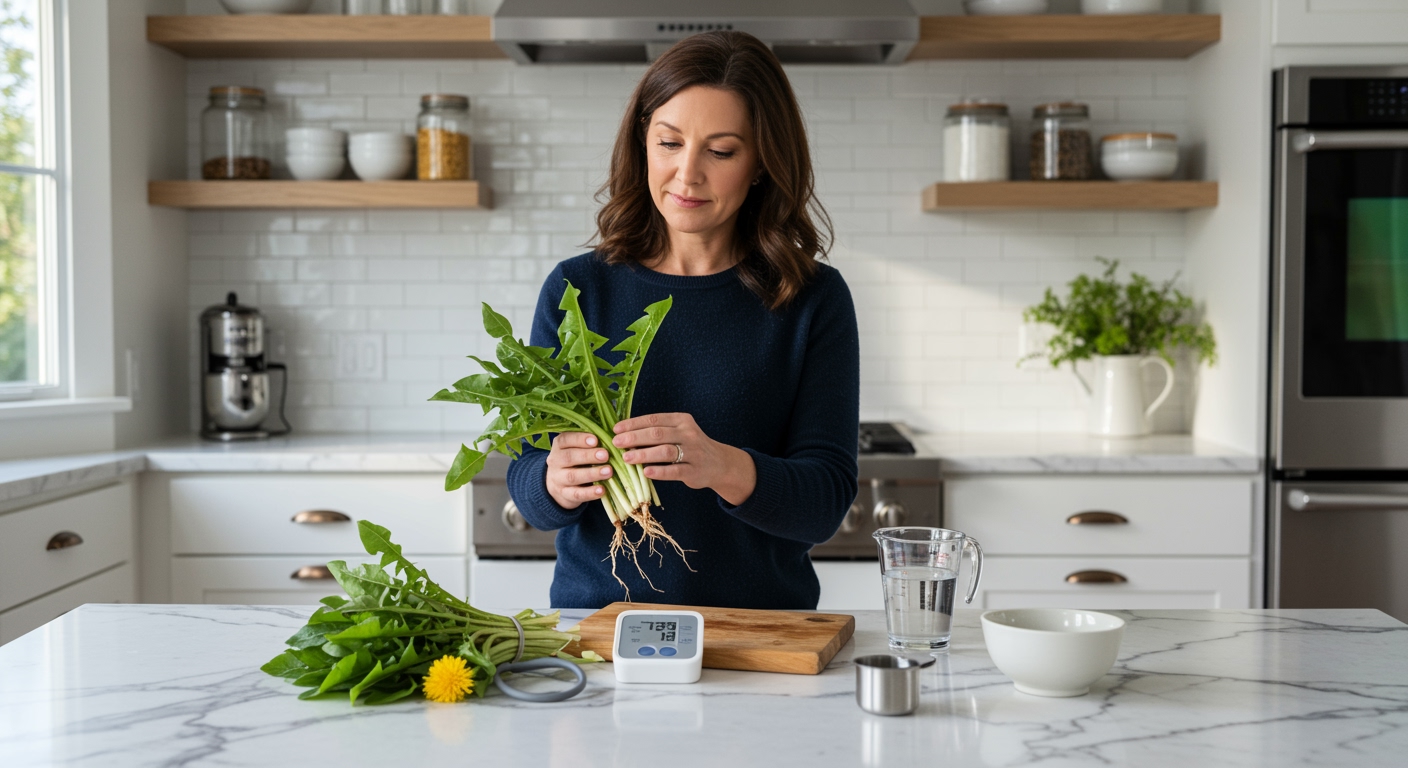✪ Key Takeaway: Dandelion greens may lower blood pressure further due to their diuretic properties, potentially worsening hypotension symptoms.
Introduction
You walk through the grocery store and spot those bitter-looking dandelion greens in the produce section.
Maybe you are wondering if these leafy greens could help or harm your already low blood pressure condition.
Hi, I am Abdur, your nutrition coach and today I am going to explain exactly how dandelion greens affect low blood pressure and what you need to know before adding them to your diet.
What Makes Dandelion Greens Different From Other Leafy Vegetables?
Dandelion greens contain unique compounds that set them apart from spinach, kale, or lettuce.
These bitter leaves pack high levels of potassium, providing about 218 milligrams per cup of raw greens.
The diuretic properties come from natural compounds called sesquiterpene lactones and flavonoids.
Your kidneys respond to these compounds by increasing urine production and sodium excretion.
This mechanism works differently than pharmaceutical diuretics but produces similar effects on fluid balance.
The bitter taste you experience comes from these same active compounds that influence your cardiovascular system.
✪ Fact: Dandelion greens contain more potassium per serving than bananas, which directly affects blood pressure regulation.
How Do Dandelion Greens Affect Your Blood Pressure Mechanisms?
Your blood pressure depends on two main factors: blood volume and the resistance in your blood vessels.
Dandelion greens influence both through their potassium content and natural diuretic effects.
The high potassium helps your blood vessels relax and widen, which normally reduces pressure on artery walls.
However, the diuretic action simultaneously reduces blood volume by increasing fluid loss through urination.
When you already have low blood pressure, this volume reduction can push your numbers even lower.
Your body tries to compensate by increasing heart rate, but this mechanism may not be enough to maintain adequate pressure.
The combination of vessel dilation and volume depletion creates a double effect that people with hypotension should understand.
✪ Pro Tip: Monitor your blood pressure for several days after eating dandelion greens to track any changes in your readings.
What Symptoms Should You Watch For When Eating Dandelion Greens?
Your body will give you clear signals if dandelion greens are lowering your blood pressure too much.
Dizziness when standing up quickly becomes more pronounced after consuming these greens regularly.
You might notice increased fatigue or feeling weak during normal daily activities.
Some people experience lightheadedness or feel like they might faint, especially in warm environments.
The diuretic effect can lead to more frequent urination and potential dehydration if you do not increase water intake.
Cold hands and feet may become more noticeable as your circulation adjusts to lower pressure.
These symptoms typically appear within 2-4 hours after eating dandelion greens and may last several hours depending on the amount consumed.
✪ Note: Stop eating dandelion greens immediately if you experience severe dizziness, fainting, or chest discomfort.
Can You Safely Include Dandelion Greens In Your Low Blood Pressure Diet?
The answer depends on your individual tolerance and current blood pressure readings.
If your systolic pressure stays above 100 mmHg consistently, you might handle small amounts of dandelion greens without problems.
Start with just one or two leaves mixed into a salad rather than eating a full cup serving.
Always eat dandelion greens with adequate salt and plenty of water to counteract the diuretic effects.
Avoid eating them on empty stomach or during hot weather when dehydration risk increases.
Consider timing your consumption for earlier in the day so you can monitor any effects before bedtime.
Most importantly, discuss this addition with your healthcare provider, especially if you take medications for blood pressure or heart conditions.
✪ Pro Tip: Keep a food and symptom diary to track how different amounts of dandelion greens affect your blood pressure and energy levels.
What Are Better Leafy Green Alternatives For Low Blood Pressure?
Several leafy greens provide nutritional benefits without the strong diuretic effects of dandelion.
Spinach offers high iron content that supports healthy blood volume and circulation.
Romaine lettuce provides moderate potassium levels without excessive diuretic compounds.
Swiss chard contains natural sodium along with potassium, creating better mineral balance for hypotension.
Arugula delivers nutrients and flavor without significantly impacting blood pressure mechanisms.
These alternatives allow you to enjoy leafy green benefits while maintaining stable blood pressure levels.
You can rotate between different greens to get variety in nutrients without risking unwanted blood pressure drops.
✪ Fact: Swiss chard naturally contains both sodium and potassium, making it more suitable for people managing low blood pressure.
The Bottom Line
Dandelion greens can worsen low blood pressure through their natural diuretic properties and high potassium content.
When managing hypotension, every food choice matters more than you might think.
I would love to hear about your experiences with dandelion greens or any questions you have about managing low blood pressure through nutrition in the comments below.
References
At NutritionCrown, we use quality and credible sources to ensure our content is accurate and trustworthy. Below are the sources referenced in creating this article:
- WebMD: Benefits of Dandelion Greens
- Healthline: Dandelion Benefits
- PMC: Dandelion Research Study
- LifeMD: Dandelion Tea and Blood Sugar





